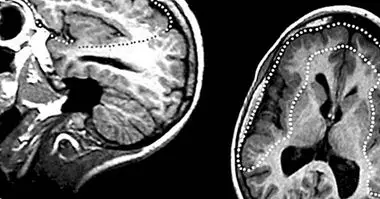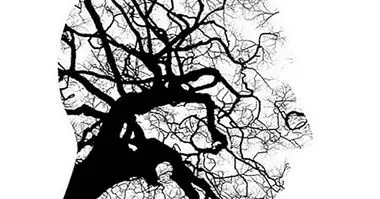DESNOS: Complex Post-Traumatic Stress Disorder
Post Traumatic Stress Disorder has been one of the most studied disorders in recent decades (especially as a result of the devastating consequences of the Second World War), due in large part to the awareness of the dysfunctionality that it entails for people who They suffer from it and the people around it.
Anyone in the world can suffer a Posttraumatic Stress Disorder one day, even if they have been exposed to the experience or occurrence of a trauma only once . But ... what happens to those people who have been exposed to very serious stressful conditions all their lives or over a long period of time? What happens to war veterans? And with children exposed to continued physical, psychological and sexual abuse? What happens when the people who attack you continuously are your primary family relationships?
In this article, we are going to delve into the Complex Post-Traumatic Stress Disorder , on his day called DESNOS .
What is DESNOS or complex PTSD?
The DESNOS (for its acronym in English, Disorder of Extreme Stress Not Otherwise Specified; extreme posttraumatic stress disorder not specified), currently known as complex PTSD, is defined by the presence of PTSD with added self-regulation problems in the person. It usually occurs in people who have experienced multiple traumatic events, a prolonged trauma, an especially serious trauma (usually related to interpersonal victimization).
An example of a complex PTSD, according to Luxenberg et al. (2001), would be a woman who as a child never received the necessary care and attention, was sexually abused by his alcoholic stepfather on numerous occasions, and saw (vicarious victimization) his stepfather violate his mother.
A new diagnostic category for complex PTSD has been proposed, and it appears that ICD-11 will distinguish between PTSD and complex PTSD (this has not been the case in DSM-5). The first will include three groups of symptoms (reexperimentation, avoidance and persistent sense of current threat manifested by activation and hypervigilance), while the complex PTSD will comprise three additional groups: affective deregulation, negative self-concept and disturbance of relationships .
Symptoms and characteristics
As we have commented, Complex PTSD is characterized by the concurrence of PTSD with some problems of self-regulation in the individual . These problems are the following:
Disturbance of the relational capacities
Alterations in interpersonal relationships arise. The person with complex PTSD would tend to isolate, to chronically distrust others, to live in anger or unjustified hostility very spontaneous towards others, to search repeatedly for a person to act as "savior" (for re-establish the lost security).
In general, they tend to be people who have few intimate relationships, because of the inability to trust and to open up to others. In some way, it could be said that they are self-sabotaged, since on many occasions they do have social skills to establish intimate relationships but because of their learning behaviors and acquired beliefs they are not able to keep them.
Alterations in attention and awareness
Dissociative symptoms frequently appear. People with complex PTSD may present alterations or fragmentations of consciousness, memory, identity, perception of themselves and / or the environment.
- The dissociation it is a difficult construct to define, and it consists of several facets:
- Disconnection (emotional and cognitive separation from the immediate environment): they can go to social situations but they seem to be absent.
- Depersonalization (alteration in the perception of one's own body or self)
- Derealization (alteration in the perception of the external world)
- Memory problems (memory leaks for personal events)
- Emotional constriction (decreased emotionality, reduced emotional response capacity). As if they were emotionally anesthetized.
- Dissociation of identity (It would be the most serious and least frequent: perception or experience that there is more than one person within one's mind).
Schemes or belief systems affected very unfavorably
There are three types of beliefs or persistent and exaggerated negative expectations in cases of complex PTSD, which we must try to relax and modify in the treatment:
- About oneself: "I am bad", "I am to blame for what happened", "I will never be able to recover", "bad things only happen to bad people".
- About others: "you can not trust anyone", "you can not trust someone who has not been in the war".
- About the world: "the world is an insecure and unfair place by default, something bad is going to happen", "the world is a very dangerous place", "I have no control over what can happen to me". In addition, feelings of shame, guilt, helplessness, invalidity, feeling that nobody understands them are very frequent.
Difficulties in the regulation of emotions and somatic discomfort
Drastic mood swings, dysphoric, irritable moods, intermittent anger (difficulties in anger management) are common ... They can show self-destructive and impulsive behaviors (including those of a sexual nature). As for somatic discomfort, they can frequently have headaches, gastrointestinal problems, chronic pain, nonspecific body aches ...
Treatment
Although the treatment will depend to a large extent on the type of trauma or traumas to which the subject has been exposed, on the psychological model in which the clinician works and on the time available, there are guidelines for the treatment of complex PTSD (Cloitre et al., 2012 ). The treatment can be divided into 3 phases:
- Phase 1 : the objective is to guarantee the safety of the person through the management of self-regulation problems, the improvement of their emotional and social competences.
- Phase 2 : in this phase will focus on the trauma as such, and in its processing of memories.
- Phase 3 : At this moment the objective is to reintegrate and consolidate the achievements of the treatment and help the person to adapt to the current life circumstances. It is advisable to carry out a relapse prevention plan.
Finally, it is important to take into account that during the whole of the therapy the beliefs about oneself, about others and about the world are going to be worked on, since it is a laborious and sometimes prolonged task, which supposes in many times the most difficult to modify.



















